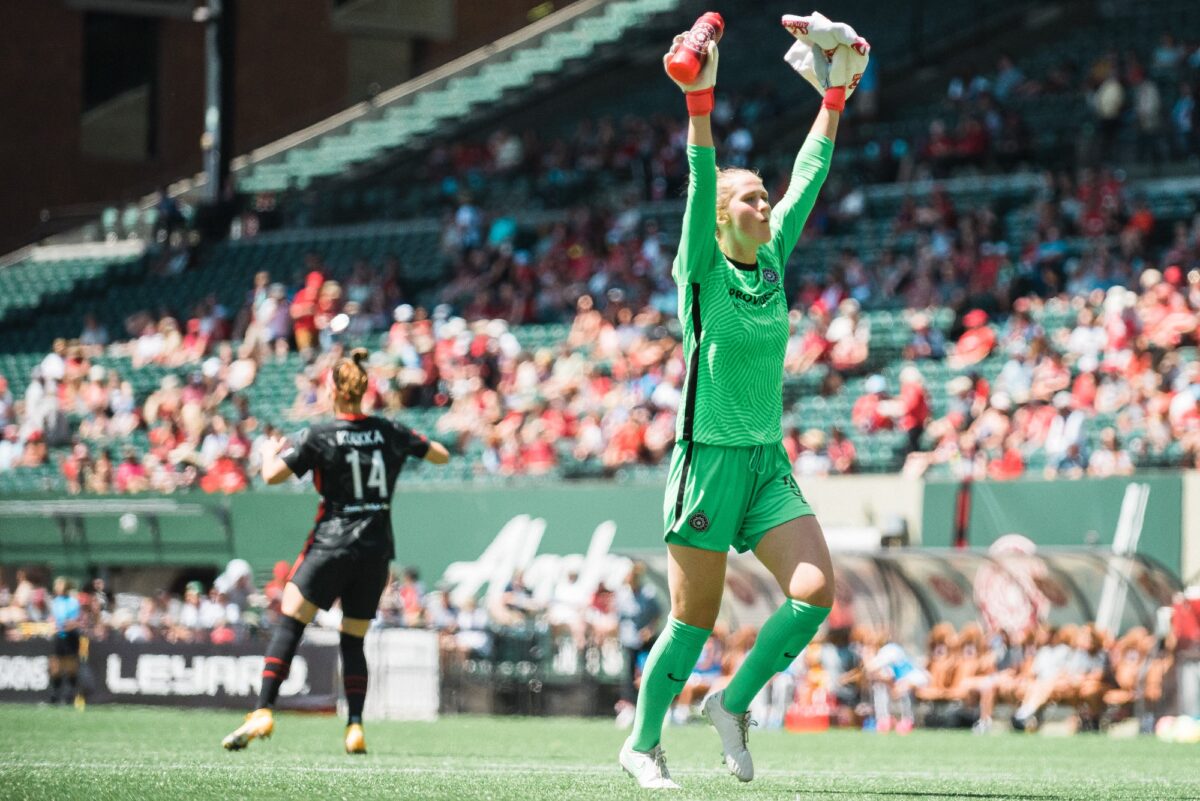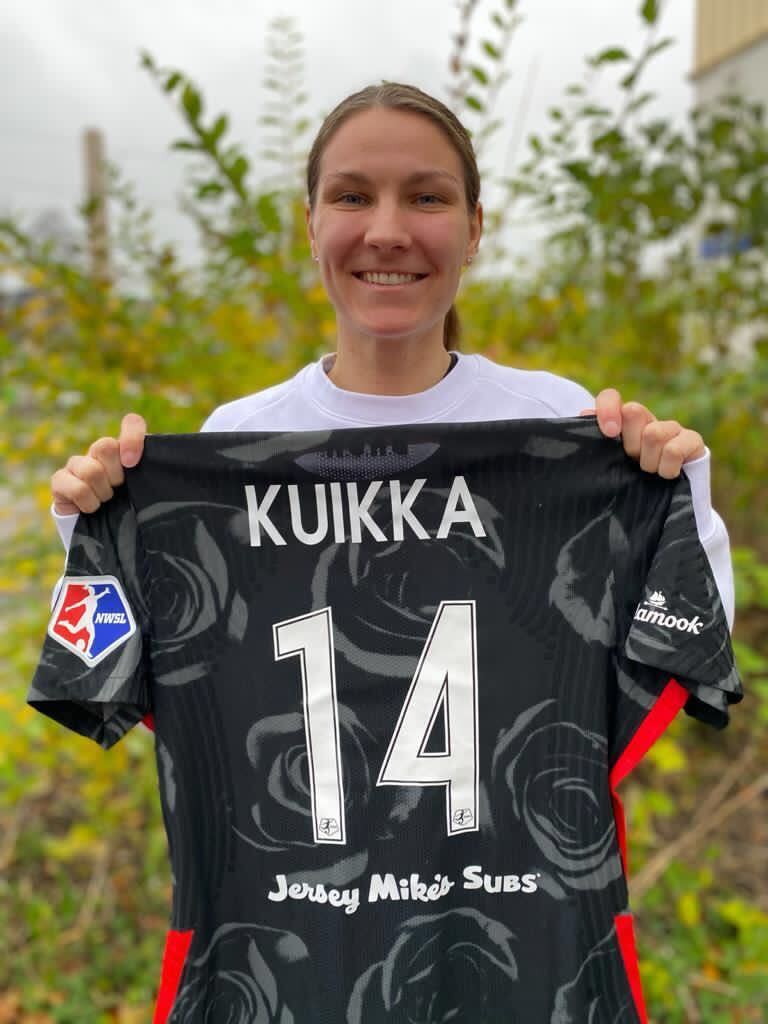The Thorns bested the Orlando Pride 2–1 on Sunday in a dominant performance capped off with a headed goal by Marissa Everett and a wondergoal by Sophia Smith. Marisa Viggiano’s freakish (in a good way) strike in second-half stoppage time capped the scoring off.
After the game, Mark Parsons pointed out that initially, Orlando stayed compact centrally and tried to keep the Thorns confined to wide areas. Forwards Crystal Thomas and Taylor Kornieck would drop down in the half spaces to help defend, but the Pride generally didn’t try to win the ball back there, instead aiming to keep Portland from passing into the center of the field. Here Kelli Hubly has just received the ball from Meghan Klingenberg. With Thomas and Kornieck flanking Meggie Dougherty Howard, the Pride have blocked off all the passing lanes toward the center.

Orlando did, however, let Portland switch the ball to the weak side. Just after the shot above, Hubly will send a long pass to Natalia Kuikka. The Pride generally didn’t attack the ball when Kuikka or Kling had it.
Because they weren’t challenged much out wide, Kuikka and Kling had a lot of time and space to create from those areas, either sending in crosses or combining with teammates who over- or underlapped them. They ended the game with 89 and 91 touches, respectively, and 51 and 59 passes. That’s around 20 more touches and ten more passes than each of them had last week against Gotham.
In the second half, Marc Skinner reorganized, benching midfielder Erika Tymrak, moving Syd Leroux to the wing, and bringing on forward Abi Kim to play in a 4-4-2 alongside Kornieck. Now the Pride did attack the ball on the wing, including when Kuikka and Kling were carrying it, but they tended to send only one player at a time to do so. That often meant that the two outside backs, who are both strong dribblers, simply bypassed the pressure and found a central pass.
I wrote in my last recap that one of the Thorns’ strengths is the consistency in the way they play each game, especially on the defensive side. They do try to win the ball on the wing (a subject for another post), and are often successful, presumably because the whole team has drilled that trap over and over again.
I’m not sure how you can expect to switch defensive strategies mid-game like Orlando did against a team that specifically does not do that and have things go well—especially, to be frank, given that the Thorns have better players! Outside backs Kylie Strom and Courtney Petersen both got beaten wide by the likes of Morgan Weaver, Smith, and the two outside backs multiple times, outclassed both skill-wise and physically, and looked very frustrated by the end of the first half.
To rewind a bit, when the Thorns don’t succeed in winning the ball on the wing, they know where they’re supposed to run after, and they all do it very quickly—again, presumably because they’ve practiced it a lot.
That’s another problem Orlando had: Portland got a number of good chances on transition simply because the Pride didn’t seem to think of that possibility and didn’t respond fast enough. The setup to Smith’s gorgeous strike is one example of this.
Below, center back Ali Krieger is winding up to take a free kick. Midfielder Dougherty Howard is open, but Krieger—maybe preemptively wary of Smith and Everett pressuring Dougherty Howard from behind?—is going to pass to Petersen, pushed out of frame up on the left wing, where the arrow points.

This one is blurry, so I circled the ball. It wasn’t a good kick, so it’s falling in the direction of the arrow, to the feet of Rocky Rodríguez, not Petersen. It’s hard to tell in the screenshot, but Smith is anticipating where Rodríguez will pass: ahead of her run, into the massive Orlando-free space that’s there because five of the team’s outfield players were just pushing toward goal.
Rodríguez indeed passes there—with a clever first-touch tap—and Smith is basically free and clear to sprint up Portland’s right wing. Petersen chases her, getting in a shove from behind at one point, but Smith keeps running, stays outside Orlando’s stranded center backs, and fires off a sweet right-footed strike from the top of the 18.



